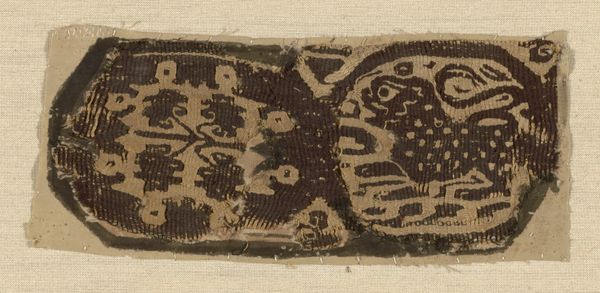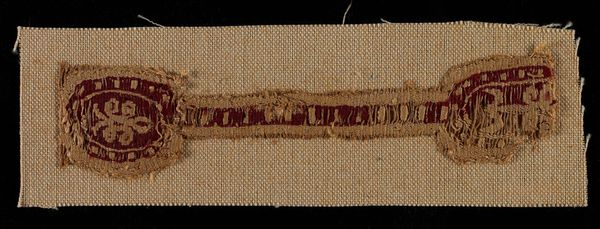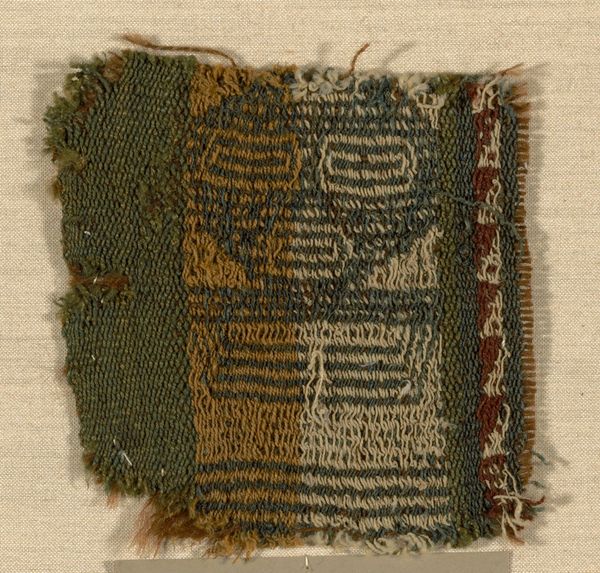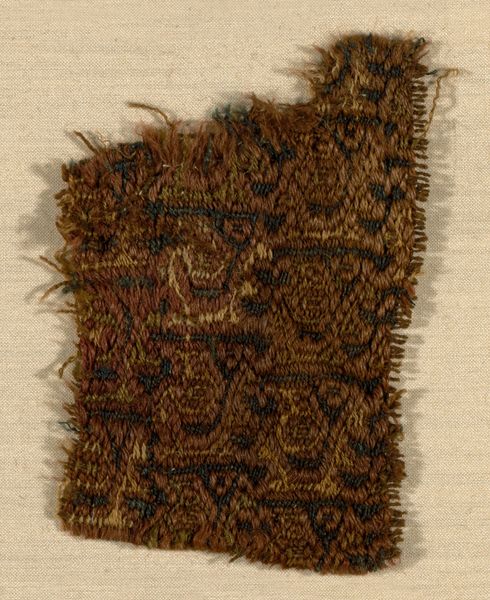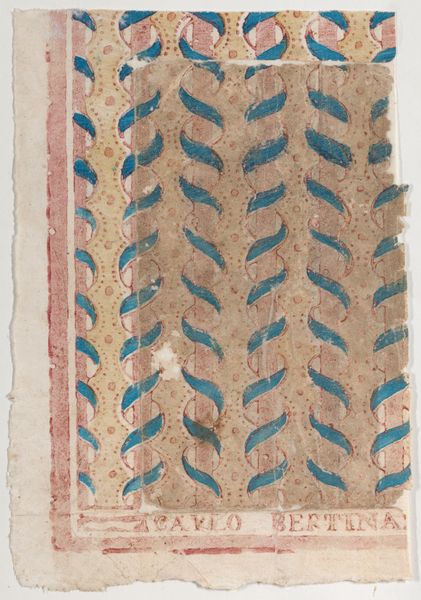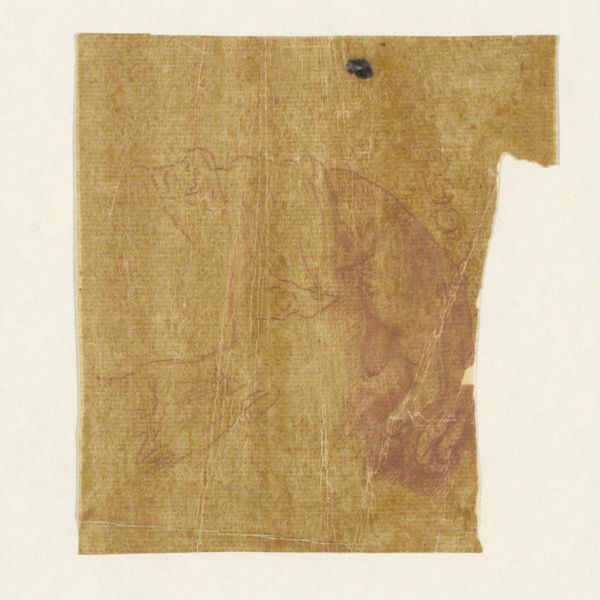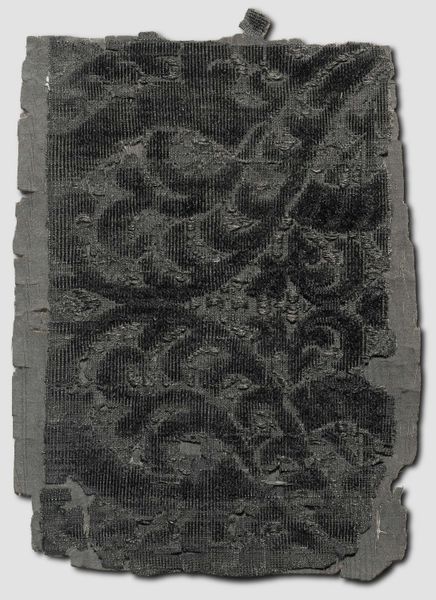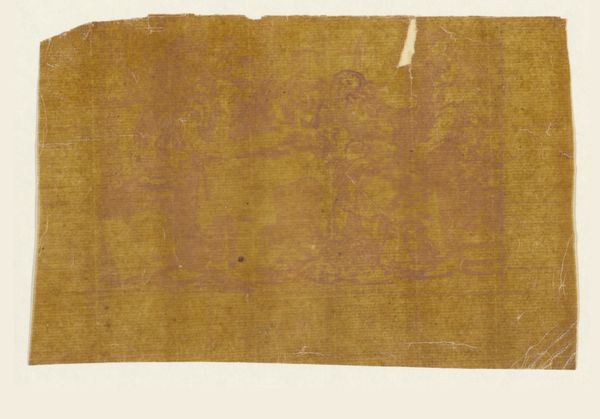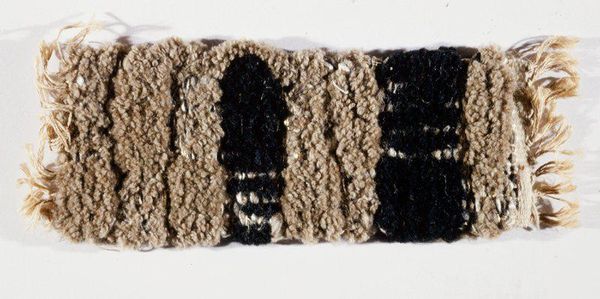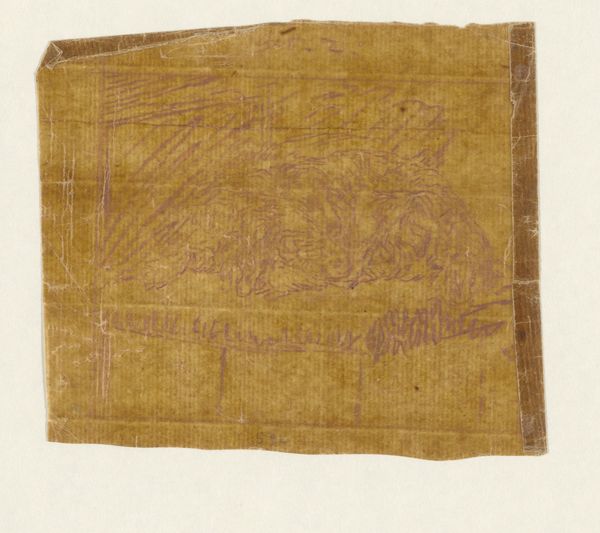
Fragment (Border) Greco–Roman period (30 B.C.– 641 A.D.), 4th/6th century
0:00
0:00
weaving, textile, wool
#
weaving
#
textile
#
ancient-egyptian-art
#
wool
#
egypt
#
geometric
#
ancient-mediterranean
#
line
Dimensions: 19.1 × 2.5 cm (7 1/2 × 1 in.)
Copyright: Public Domain
This is a fragment of a textile border, made by a Coptic artist sometime in the past. Textiles such as this one provide a lens through which to explore the cultural identities that flourished in Egypt during the early centuries of Christianity. The Copts, native Egyptians who embraced Christianity in the first century, developed a unique artistic style blending Egyptian, Greco-Roman, and Christian motifs. Though small, this piece exemplifies that fusion. Notice how its geometric pattern and earthy tones echo ancient Egyptian art, while the stylized floral motifs reflect Greco-Roman influences. These textiles weren't merely decorative, they were deeply connected to personal and communal identity. Often adorning tunics, curtains, and burial shrouds, they served as emblems of faith, status, and belonging. Consider, how this unassuming fragment embodies the complexities of cultural exchange, religious expression, and personal identity in a distant time and place.
Comments
No comments
Be the first to comment and join the conversation on the ultimate creative platform.
